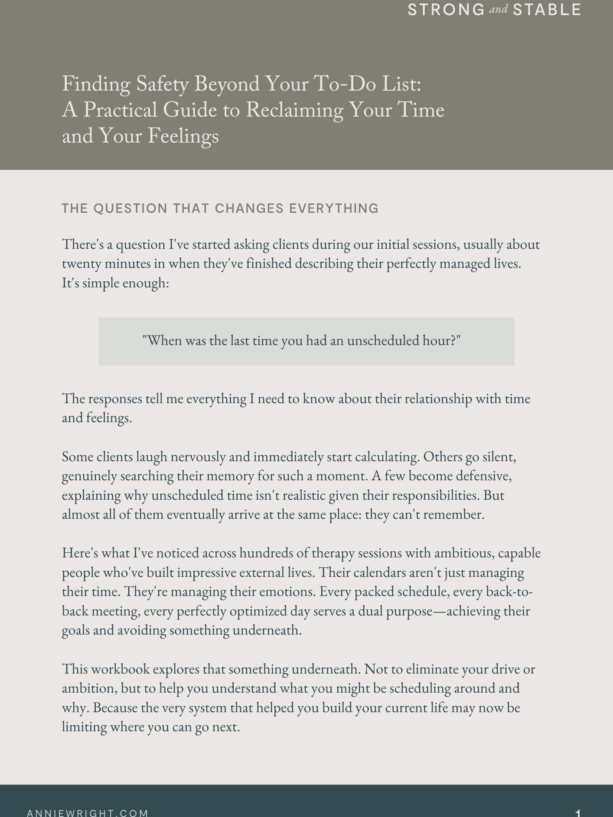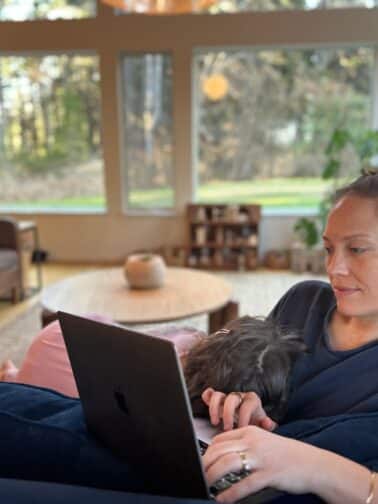But here’s what I’ve noticed across hundreds of therapy sessions: the moment that to-do list clears, something shifts.
Maybe it’s the unexpected free hour when a meeting gets cancelled. The rare Saturday morning with nothing planned. The vacation day that actually feels… vacant.
Does your chest tighten? Do you find yourself immediately reaching for your phone, scrambling to fill the space with something—anything—that feels productive?
If that scenario makes your nervous system activate, you’re experiencing something I see constantly in my practice. For many high-achieving women, busyness isn’t just about getting things done. It’s sophisticated emotional protection—a way to stay one step ahead of feelings that might feel too big, too uncomfortable, or too risky to meet directly.
This week’s workbook offers a different approach.
Section 1: Understanding Your Foundation
The Architecture of Avoidance
Think of your life as a house you’ve been building for years. From the outside, it looks impressive—successful career, interesting projects, social calendar that suggests a full and meaningful life. The upper floors are beautifully appointed with achievements, relationships, and experiences that reflect your values and capabilities.
But every house needs a foundation. And for many of the people I work with, the basement has never been fully addressed.
Exercise: Mapping Your Avoidance Patterns
For the next three days, track not just what you do, but what happens inside you during the transitions between activities. Use this framework:
Activity → Feeling Before → Feeling After → What I Might Be Avoiding





